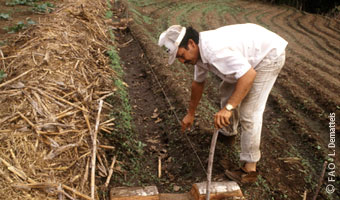Stark Differences in Population’s Welfare in Salvadoran Regions, Departments and Municipalities

Although Salvadoran households have seen their average income rise, and poverty has been reduced significantly (from 58.7% to 34.6% between 1992 and 2007, according to official data), both advances conceal stark differences between regions, departments and municipalities throughout the country.
This is one of the conclusions of the study “Dynamics of Inequality in El Salvador: households and poverty in numbers, 1992 /2007”, prepared by ECLAC as part of a cooperation agreement with RIMISP-Latin American Center for Rural Development.
The disparity, geographical inequalities in terms of material welfare and gaps in opportunity and access become evident when analysing how the population is distributed geographically and abroad, as well as income distribution.
San Salvador, the capital, has the best living conditions in the country, compared to other municipalities that have lost half of their population to migration, according to the study.
When the civil war ended in 1992, El Salvador embarked on a process of national reconstruction and structural adjustments that, well into the present decade, has maintained these same differences.
The study asserts that to this day the peculiarities of each territory as internal processes in themselves are not taken into account, nor have local economies become more dynamic.
The study suggests that to eliminate geographical inequalities in the material welfare of Salvadorans, national programmes must be designed with development tools based on national diversity and the idiosyncrasy of human groups.











